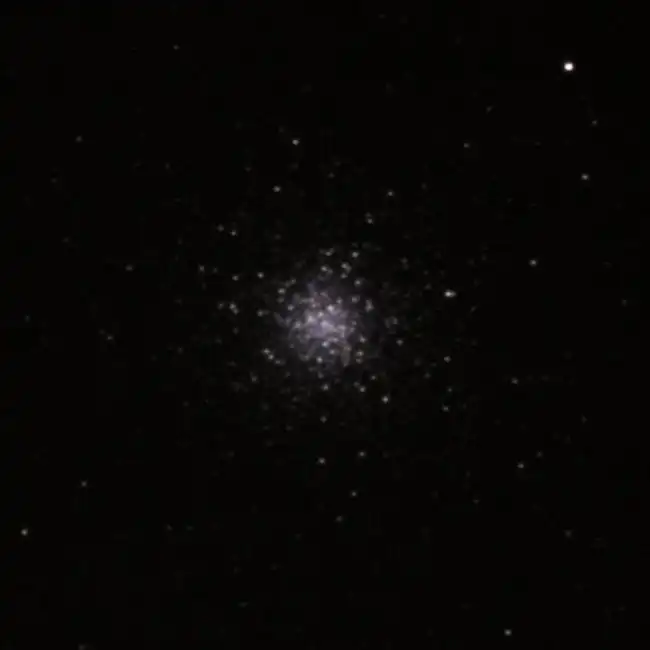Messier 3 (M3), also known as NGC 5272, is one of the most impressive and well-studied globular clusters in the night sky. Located in the northern constellation Canes Venatici, M3 is a favorite target for both amateur and professional astronomers due to its brightness and beauty. Discovered by Charles Messier in 1764, this globular cluster has captivated observers for centuries.
Description
Messier 3 is a globular cluster, which is a spherical collection of stars bound together by gravity. It is composed of about 500,000 stars, many of which are older, red giants. M3 spans roughly 180 light-years across and lies approximately 33,900 light-years from Earth. The cluster has an apparent diameter of around 18 arcminutes, making it a fairly large object in the sky, though its dense core makes it appear smaller to the naked eye.
Magnitude
M3 has an apparent magnitude of 6.2, making it visible to the naked eye under exceptionally dark skies. However, it is more commonly observed with binoculars or a small telescope, which will reveal it as a bright, concentrated patch of light. Larger telescopes can resolve individual stars in the cluster, particularly around its outer regions.

Season and Visibility
Messier 3 is best observed during the spring months in the Northern Hemisphere, particularly from late March to June. It reaches its highest point in the sky during May, which is when it is best positioned for observation.
Constellation and Location
M3 is located in the constellation Canes Venatici, which is a relatively obscure constellation in the northern sky. Canes Venatici is situated between the more prominent constellations of Boötes and Ursa Major. The cluster itself lies about halfway between the bright star Arcturus in Boötes and the star Cor Caroli in Canes Venatici.
How to Find Messier 3
Finding M3 can be relatively straightforward if you use the bright star Arcturus as a reference. Start by locating Arcturus, which is one of the brightest stars in the sky, easily identifiable by its orange hue. From Arcturus, move your telescope or binoculars roughly 6 degrees northwest towards Cor Caroli. M3 will appear as a faint, fuzzy patch in binoculars, but with a telescope, you should be able to resolve it into a more distinct cluster of stars.
For more detailed observation, a telescope with an aperture of at least 4 inches is recommended. With larger telescopes, you can resolve the individual stars in the cluster, particularly in the outer regions, where the stars are less densely packed.

History
Messier 3 was discovered by the French astronomer Charles Messier on May 3, 1764. Messier initially cataloged it as a "nebula without stars" because the individual stars could not be resolved with the small telescopes available at that time. Later, with more powerful telescopes, astronomers were able to resolve the cluster into its constituent stars. M3 became one of the first globular clusters to be recognized as such.
In the centuries since its discovery, M3 has been studied extensively, revealing much about the nature of globular clusters. It contains a large population of variable stars, including over 250 RR Lyrae variables, which are used as standard candles to measure astronomical distances. These stars have played a crucial role in helping astronomers understand the structure and scale of the Milky Way.
Conclusion
Messier 3 is one of the most beautiful and accessible globular clusters for amateur astronomers. Whether you're observing with binoculars or a large telescope, M3 offers a glimpse into the ancient history of our galaxy. Its bright stars, dense core, and historical significance make it a must-see object for anyone interested in the night sky.
